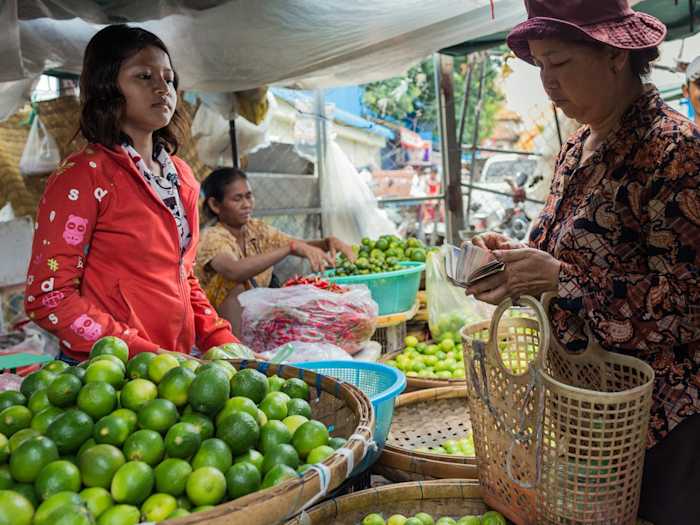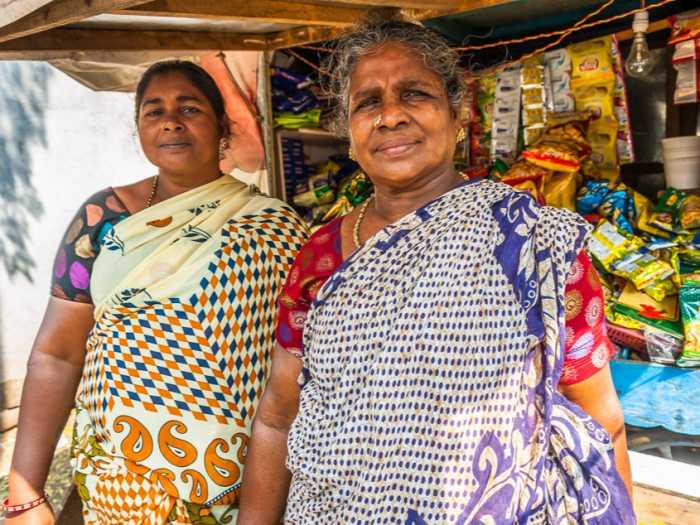Expert interview with Jaskirat Chadha
Why microfinance remains a force for good
Media coverage on microfinance has emphasized that while it has not been able to end poverty, it has significantly increased the quality of life for large portions of low-income populations by enabling them to start businesses, fund their education, or pay for medical care. The same media coverage also emphasizes that regulatory scandals, profit-hungry players, and a trend to spark over-indebtedness in certain markets have given microfinance a bad-wrap. So we decided to talk to an expert on the ground to get some straight talk about microfinance, and why responsAbility remains confident that it is a force for good in the sector.

Jaskirat Chadha is the Head of Financial Inclusion Debt, Asia Pacific, for responsAbility Investments. With over 17 years of experience of market coverage and transactions with financial institutions, he is currently managing the private debt portfolio and investment activity for financial institutions in the Asia-Pacific region. He studied economics at the London School of Economics and Political Science.
Q: What is micro and SME finance?
Micro and SME finance encompasses a range of lending products designed specifically to cater to the credit needs of borrower categories ranging from household-based entrepreneurs to formalized Small & Medium-sized enterprises (SMEs). Such borrower segments are typically excluded by traditional lending institutions (such as banks) given the high degree of specialization required in product design, customer service and operational infrastructure. responsAbility focuses on providing funding to financial institutions (MFIs) that have demonstrated a track-record of servicing such borrowers.
Q: How did you get involved in Micro and SME finance and why?
I have tracked the industry for the past 17 years — first, as a credit analyst at a leading credit rating agency institution in India, and since 2016 at responsAbility Investments, investing across the Asia Pacific region. My learnings from tracking the sector across several economic and credit cycles is that lending to micro and SME entrepreneurs when done correctly, is a very stable asset class for a financial institution. This is because of the small ticket nature of such lending, and the borrower’s business typically being focused on goods and services consumed by the local market, thereby being less correlated to the global economy.

Q: Which markets do you currently oversee?
I am responsible for investments of responsAbility’s financial inclusion debt investments in the Asia Pacific region. We are active in 10 countries in the region, including India, Vietnam, China, and Cambodia, and within these countries we are spread across a large base of portfolio companies.
Q: What are the biggest problems that you see for end borrowers in your market?
Well, the most obvious problem over the past couple of years has been dealing with the disruptions caused by the pandemic. However, as we have seen during earlier economic cycles, end borrower businesses have recovered very well over the past year, with the resumption of economic activity and the focus of the borrower businesses on essential goods and services that have helped them sustain their income during the lock-down periods. Take for example, the typical India MFI which saw more than a majority of its end-borrowers service timely debt repayments between April-May 2021 when most of the country was under a strict lock-down, and the pandemic had wreaked havoc on the personal lives of a large part of the country’s population. For the borrowers, whose businesses were impacted and therefore struggled to clear their debts, loan moratoriums or flexible repayment terms were offered. In general, most of these end-borrowers resumed timely servicing of debt once the economy reopened and economic activity resumed.
responsAbility, as a lender, also played an important role in enabling MFIs to offer flexibility to the end-borrowers. responsAbility, for instance, signed an MoU with other like-minded lenders that laid the framework to offer MFIs flexibility in the servicing of their own debt obligations in a unified, pragmatic and efficient manner. This enabled the MFIs to not put extra stress on the end-borrowers to repay during the difficult times.
Q: How do you ensure that you are only working with credible lenders?
At responsAbility, we take very seriously the pitfalls of microfinance and dedicate a large part of our sourcing efforts to identify like-minded partners that positively contribute towards financial inclusion. In each of our focus countries, we adopt a bottom-up approach for partner selection. This entails a mapping of all key players in the market, developing an understanding of the growth dynamics, competitive landscape, and lending practices, and finally the evaluation of the role and capacity of the regulator, self-regulatory bodies and market infrastructure (eg. credit bureaus) to navigate the sector on a responsible path. Through process we proactively identify partners that have a track record of playing a constructive and relevant role in the financial development of low-income communities. All investments made by responsAbility meet a minimum eligibility, risk/return, and ESG criterion.
Q: Have you ever had to remove any Microfinance Institutions from your portfolio? If so, why?
Absolutely, there are several instances where we have chosen to unilaterally end a lending relationship with investees and in some instances also withdrawn from specific markets/market segments. The reasons for this range from systemic to idiosyncratic considerations. This includes instances where responsAbility no longer considers client protection standards as adequate.
responsAbility continuously monitors developments at our partner institutions, and their respective operating markets. Large or unexplained variances on key parameters, or deviations from the other lenders, or adverse changes in the markets itself are flags considered to challenge our initial assessments and can eventually form the basis to end a relationship.
Q: Imagine that someone says that microfinance is just rich people making money off the poor. What would you say to them?
I break this argument down to two important and distinct elements which tend to get confused with each other. The first is the level of success that microfinance has had in reducing poverty, and the second is the role of fringe players that focus on profiteering.
On the first, financial inclusion alone is not sufficient to drive mass poverty reduction. The needs of low-income populations extend far beyond that of financial inclusion. Aspects such as adequacy of health, education, and other social considerations play a huge role in the prospect of lifting a family out of poverty. Microfinance brings a low-income household one step closer in the direction of poverty reduction, by allowing them an opportunity to develop a stable source of income, and drive employment through its spillover effects. I have seen this first-hand in my travels over the past 15 years across several market types. Microfinance drives productive economic activity, period.
"Microfinance drives productive economic activity, period."
On the second, a key measure of success of a microfinance transaction is whether the borrower increases her net disposable income from business activity that she wouldn’t have been able to undertake without the access to funding. This is where the microfinance product design, underwriting and collection standards of the MFI play a crucial role. In each of our markets there exist players who operate with perverse incentives and have a counter-productive role in financial inclusion. However, these players are at the fringe, and we see their role diminish as organized and responsible players expand the scale and breath of their operations. Therefore, from responsAbility’s perspective, we continue with our mission to create positive impact for low-income households by supporting responsible partners.
And finally, sustainability is at the core of all of responsAbility’s investments, whether targeting financial inclusion or sustainable food or climate finance. That means that purpose must align with profit. Otherwise, it is not sustainable, by definition. What we have achieved through microfinance, including increasing opportunities for millions of people, can only be achieved if we can create products that make sense for investors.
